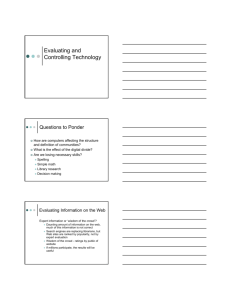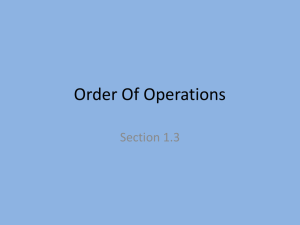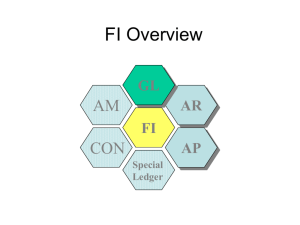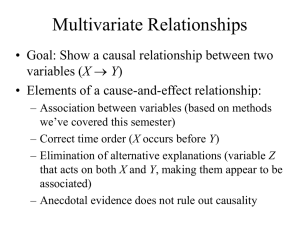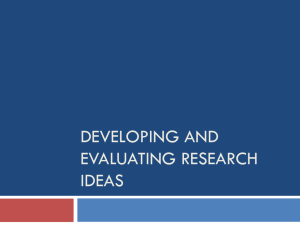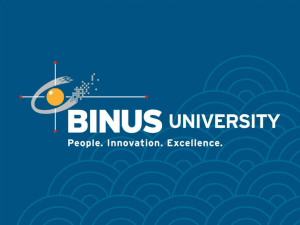Evaluating and Controlling Technology
advertisement
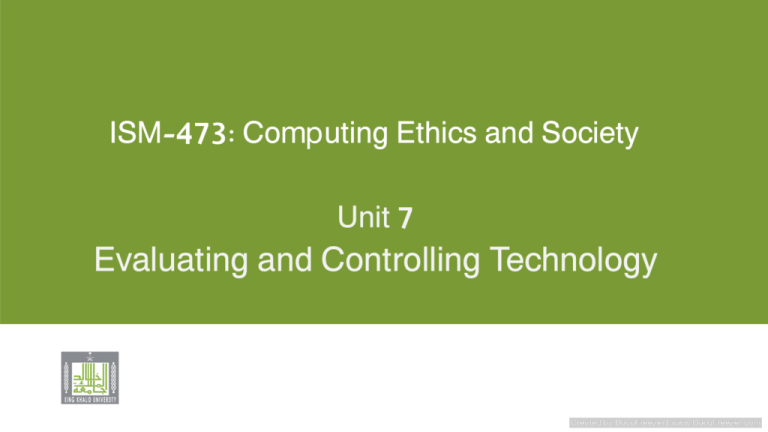
ISM-473: Computing Ethics and Society Unit 7 Evaluating and Controlling Technology Gift of Fire A Fourth edition Sara Baase Chapter 7: Evaluating and Controlling Technology Lecture 20 What We Will Cover The “Digital Divide” The "Digital Divide" Trends in Computer Access New technologies only available to the wealthy The time it takes for new technology to make its way into common use is decreasing Cost is not the only factor; ease of use plays a role Entrepreneurs provide low cost options for people who cannot otherwise afford something Government funds technology in schools As technology becomes more prevalent, the issues shift from the haves and have-nots to level of service Book NO: 329-331 The "Digital Divide" The Global Divide and the Next Billion Users Approximately two billion people worldwide have access to the Web, a fivefold increase over roughly a decade. Approximately five billion do not use the Internet. Non-profit organizations and huge computer companies are spreading computer access to people in developing countries. Bringing new technology to poor countries is not just a matter of money to buy equipment; PCs and laptops must work in extreme environments. Some people actively working to shrink the digital divide emphasize the need to provide access in ways appropriate to the local culture. Book NO: 331-332
